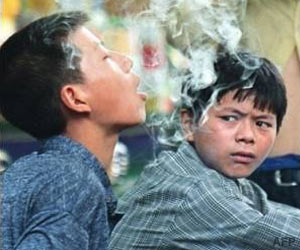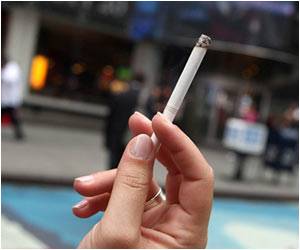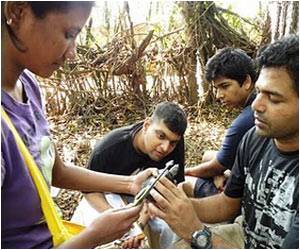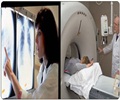Blood levels of inflammatory signaling proteins (e.g. forms of interleukin, interferon, and tumor necrosis factor) were found to be significantly higher in hookah workers after their shifts.

‘Exposure to second hand smoke is the third leading preventable cause of death, accounting for 3,000 lung cancer deaths and 35,000 heart disease deaths every year among non-smokers.
’





According to the study authors, New York City now has approximately 140 hookah bars and lounges, traditionally frequented by people of Middle Eastern and Indian descent, and increasingly, by young people of all backgrounds. The practice involves smoking shisha, a fruit-flavored, often tobacco-based material using a water pipe or hookah. "Hookah use is often exempt from clean indoor air laws that protect people from secondhand smoke," says toxicologist and senior study author Terry Gordon, PhD, a professor in the Department of Environmental Medicine at NYU Langone and at the university's CGPH. "Ours is the first study that links poor hookah bar air quality to damaging effects in workers, and the results recommend closer monitoring of this industry to protect the public."
Secondhand smoke exposure is the third leading preventable cause of death in the United States, responsible for 3,000 lung cancer deaths and 35,000 heart disease deaths annually among Americans that never smoked. Beyond health consequences, the new study identified airborne nicotine in the four hookah bars surveyed even though tobacco-based shisha is banned in these venues in New York City.
The research team found that indoor air pollutant concentrations varied, but they were directly proportional to the number of people smoking and water pipes used. Many of the hookah lounges had no open windows or doors to ventilate the smoke, say the study authors.
Specifically, researchers found that the average level of exhaled carbon monoxide rose markedly after the workers' shifts, with readings from two of the 10 workers greater than 90 parts per million, which is similar to those seen in heavy tobacco smokers. Additionally, blood levels of inflammatory signaling proteins (e.g. forms of interleukin, interferon, and tumor necrosis factor) were found to be significantly higher in workers after their shifts. Such proteins are part of normal immune responses, but also central to heart disease and cancer when present in too high levels.
Advertisement
Advertisement















